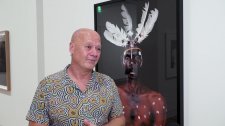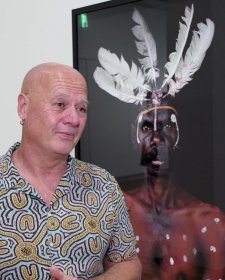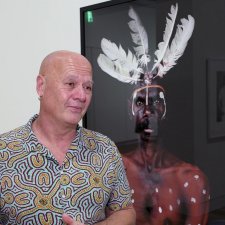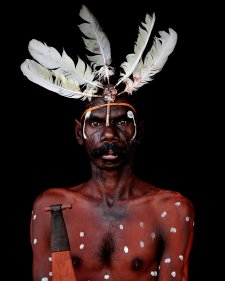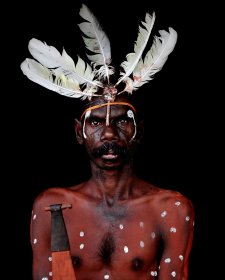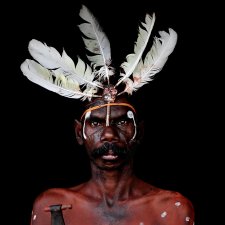- Can you tell us a little bit about this incredible portrait?
- Sure, thanks so much Jill and for having me here. And yeah, so the portrait's of my mother, Catherine, and the photograph was taken in a family home that we had and my mother was relocating to Tasmania. And on the last day that we were there I asked her to stand for this portrait and yeah, she's holding a sculpture that belonged to my grandfather that had a lot of, you know, meaning to me and a lot of memories there. And so I wrote some text for it and I reached out to a very talented colorist in London, Jordan Lloyd, and he kind of responded to the text and the sentiments of the photograph with the colour. So it kind of, yeah, it created this sort of, I guess, an image or a portrait of my mother which I hope is sort of speaks more of the sentiment than any kind of reality 'cause of course these things can't really be pictured or or written about in a way that kind of articulates. So here we are.
- There's been a few artists actually that we've spoken to in the exhibition who have turned to family and friends and loved ones as subjects simply because they were forced to during the COVID lockdown. Is that something you can relate to or is it just something you naturally came to over time?
- For me, it's sort of started more from a place of, you know, I started looking through archival family photography in a way to kind of better understand and position, you know, myself, and that's kind of as a photographer, you know, making work about largely about a country where you know, I'm the son of of immigrants and you know, it sort of stemmed from there, but, and you know, ultimately it's I think a lot of photographers are trying to hang onto things around them and that's why they take pictures. It took me a really long time to work that out about myself, but, you know, that's where I'm at. And I read this amazing quote once and I can't even tell you who said it, but it was, you know, "Photograph the things that you love the most." And I had just read that actually just before you know, making this image of my mom and I really think that, you know, that's a really important sentiment that you can take to your photography and I think I'm not the only one that's doing that, I think a lot of people are realising that.
